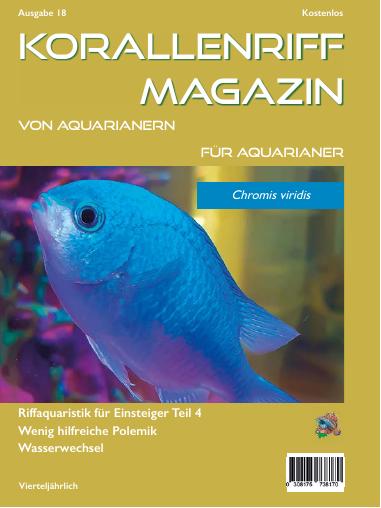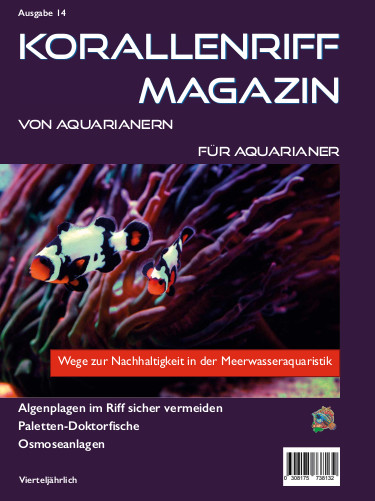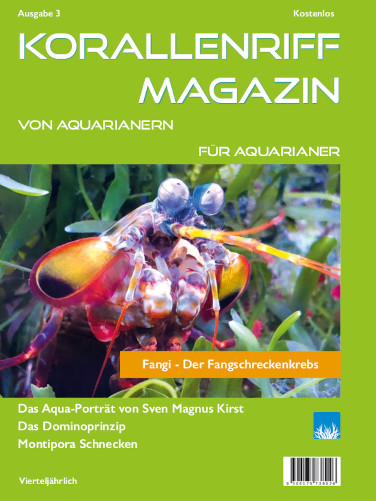Info
Amphiprion ocellaris Cuvier, 1830
Der sog. Falsche Clownfisch Amphiprion ocellaris lebt westlich des Verbreitungsgebietes des Echten Clownfischs Amphiprion percula . Dieser lebt in den Riffen Südostasiens. Die Verbreitungsgebiete der beiden bekanntesten Clownfisch-Arten überschneiden sich daher nicht. In Nordaustralien lebt eine melanistische, bis auf die Querbänder sowie Schnauze rein schwarze Farbvariante, der als Schwarzer Clownfisch Amphiprion ocellaris black bezeichnet wird.
Sex and mating.
Anemonefish are protandrous hermaphrodites, meaning that life begins as a male. If two juveniles of the same size are present, then the more dominant anemonefish will develop into a female. If two females of the same size are placed together, then the weaker female will form back into the male, but this will take some time and there will be fierce fighting. The reversion can take several weeks, and during this time the more dominant female will keep putting the pressure on the weaker female until the sex has changed.
If there are several anemonefish in the aquarium and the dominant female dies, the previously dominant male will revert to female and a previously suppressed animal will move up to the dominant male. By this adjustment the main task, the spreading of the "own genes" on fast way remains.
Once the disputes have settled and the roles are established, the female will continue to grow. The difference in size from male to female is about 1-3 cm depending on the initial size of the species.
Die Clownfische Amphiprion ocellaris leben paarweise oder in Haremsgruppen mit einem Weibchen und mehreren Männchen in der Anemone.
Amphiprion ocellaris lebt im Meer mit folgenden See-Anemonen: Stichodactyla gigantea, Stichodactyla mertensii und Radianthus magnifica.
Ist eng verwandt mit Amphiprion percula, hat jedoch keine grössere Rückenflosse.
Zur aquaristischen Haltung:
Ein leicht zu haltender See-Anemonenfisch, der dazu noch sehr stark gezüchtet wird - Aufzuchtbericht von I. Krause (08 / 2007)
Deshalb sollte er auch immer als Paar gehalten werden. With the right conditions, your fish will also soon start spawning.
In general, you should clearly prefer offspring to wild-caught fish.
1. these are much more stable in health,
2. they support the further breeding.
And the breeding of marine fish is the big topic of the next years.
So-called "Nemo" aquariums (the movie "Finding Nemo") had caused a real run on these fishes at that time), however, are completely unsuitable without basic knowledge in marine aquaristics and are detrimental to the animals.
The majority of sea anemone fish in the trade are normal Amphiprion ocellaris!
Since this fish always stays close to or inside the anemone, it does not really need much swimming space. However, you should give it a tank with at least 100 liters water capacity, better 150 liters. Simply because they are always relatively close to their host anemone and hardly swim around freely. Nevertheless we consider it unsuitable for a 60 liter nano tank. Here already a lot of experience belonged to keep the water values stable.
For this you should keep an eye on the water values if the water volume is low.
Sea anemonefish can also become ill if the environmental conditions deteriorate. This is more likely to happen in smaller water volumes than in larger tanks. However, this is ultimately up to the keeper and the regular measurement of the water parameters.
Synonyms:
Amphiprion bicolor Castelnau, 1873
Amphiprion melanurus Cuvier, 1830







 Dr. Robert A. Patzner, Österreich
Dr. Robert A. Patzner, Österreich






















































































